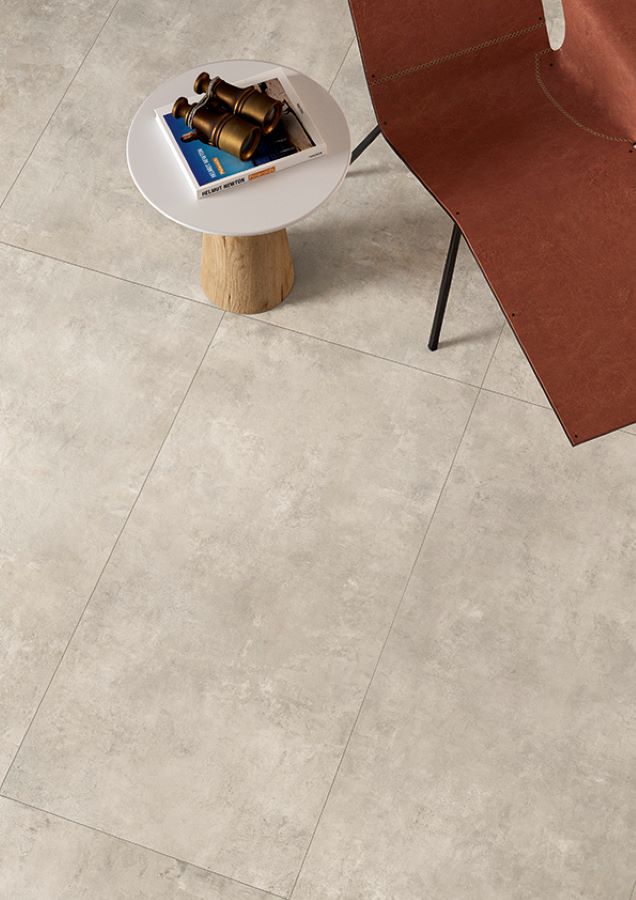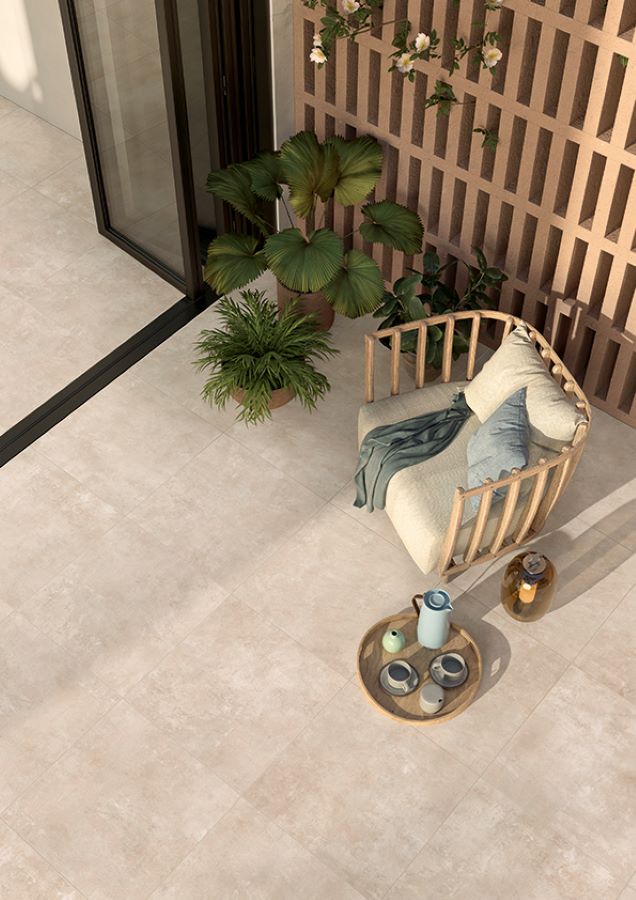
Are porcelain tiles slippery? As porcelain tiles come in a plethora of finishes, it’s a question we are frequently asked both generally as well as for specific tiles. So in our blog we explore the topic are porcelain tiles slippery? We look at the factors that influence slipperiness of porcelain tiles, an overview of tile slip ratings and surface finishes and things to consider when choosing tiles for your project.
How slippery a porcelain tile is really depends on the tile surface finish. Tile surface finishes vary hugely. There are a host of different finishes and finish names including polished, matt, lapatto, semi-polished, natural, soft, antislip to name a few. It is important to understand that each tile finish will have it’s own characteristics. Broadly, tile finishes fall into three main categories:
Polished tiles
Polished or gloss tiles have a high gloss, smooth surface finish. It’s a finish that is used lots for marble tiles in particular to enhance their beauty. However, because of the high gloss finish, polished tiles can become slippery, particularly when wet, so they are better for areas of the home where water isn’t likely to be present for example living rooms or bedrooms. Even a semi-polished or lapatto tile finish is more likely to be slippery when wet than a matt tile.
Matt tiles
Matt tiles have a texture that creates more traction and this makes them a better choice for rooms like kitchens, bathrooms or laundry rooms where water is more likely to be present. Matt finishes can be called lots of different names, for example, soft or natural and these tiles are super versatile as they can be used across the home and usually on walls and floors. Tiles with matt finishes will have varying slip ratings for example a typical matt tile may have a slip rating of R9 or R10.
Antislip
Antislip tiles are specifically designed with a rough surface texture so they have maximum slip resistance. This makes them ideal for wet areas such as swimming pool surrounds, external patios and pathways. A typical antislip tile will have a rating of R11 or R12 and for those being used around a swimming pool the addition of A+B+C so a typical tile for used outside would have an R11 A+B+C or and R12 A+B+C rating.
For a wetroom it is advisable to opt for a higher rated tile ie minimum of an R11 A+B+C. This is because in a wetroom you are standing on the tiles in barefeet with water and the addition of soap and shampoo present and this will definitely make porcelain tiles slippery when wet. It’s also worth considering that antislip tiles have an additional layer of frit applied to the surface to create the texture but this does bring added maintenance because of the more textured surface. Some tiles are particularly rough in surface texture eg an R12 A+B+C rated tile whilst some Antislip tiles are smoother so it is worth getting some advice on the best option for your wet room project because the higher the slip rating, the tricker tiles can be to clean but the higher the rating the less slippery the tiles are.
There are some really clever tile technology developments when it comes to tile surface finishes. For example, our Antislip Soft tiles are an R11 A+B+C rated tile that are designed to have a high slip rating but also be easy clean. This means they can be used across the home on walls and floors and in the wetroom aswell.
External tiles are available in higher slip ratings specifically for outside spaces. For patio areas and pathways as well as tiles surrounding pools a minimum R11 A+B+C rated tile is advisable. External tiles have an extra layer of frit to the tile surface to create grip. Outside a grippy tile is easier to clean than inside because you can sweep and jet wash (taking care around grout) or use a stiff bristle brush with water. Again, it is important to ensure that tiles are kept clean as any dirt build up can make porcelain tiles slippery when wet because it affects the grip of the tile. There are specialist cleaning products for external tiles to help keep them in tip top condition – the same is applicable for your internal tiles too.
Tile Slip ratings can be quite confusing but they can help you decide which tiles might be best for your project. There are a few ways that slip resistance is measured.
The Ramp Test is one of the most common and gives an R-value from R9 to R13. This test is for shoes on.
There is an additional ramp test – DIN 51097 for wet and barefoot conditions from A-C and these ratings are for where tiles are being used around swimming pools, wetrooms, or any other place footwear would not be worn.
In addition, the Pendulum CoF test replicates the motion of a slipping foot and the tiles in response to that motion. This test gives a value called a PTV value or Pendulum Test Value. It’s a different way of testing slip resistance.
For more detailed information on slip ratings and slip resistance click here to read our guide.
Several factors will influence the slipperiness of a tile.
Moisture can of course increase the risk of slipping and this is especially so for tiles that are highly polished or glossy. But the type of shoes can also impact traction, so rubber soles usually provide better grip than smooth soled shoes or socks for example.
Then we need to factor in tile maintenance. So dirt, soap or grease residue can all build up on the tile surface and affect the slip resistance of tiles. In addition, some off-the-shelf cleaners can leave a layer of film on the tile surface that can also affect the slip rating of a tile.
If you are concerned about tile slipperiness then here are some points to consider:
Porcelain tiles can be slippery when wet particularly polished finishes. However, understanding different tile finishes and slip ratings can help when choosing tiles for your project. There are so many porcelain tiles to choose from in a wealth of surface textures so you can find the right tile for your environment!
Click the images with a description underneath to head straight to these tiles on our website.
Working on a project? We’d love to help! Get in touch and let us start searching for beautiful tiles with you!
If you would like to know more, please get in touch...
The TilePortfolio specialise in Italian and Spanish Porcelain and Ceramic tiles, in particular large format Porcelains and Porcelain tiles for inside and outside. Our carefully curated, stunning tile portfolios are beautifully presented online and supported by our fuss-free ‘go-the-extra-tile’ service. In addition, you can view our entire tile collection at our Northamptonshire Showroom. Visit our website for unmissable interiors inspiration. The TilePortfolio team are always available to chat, we’d be delighted to help with your project so please do get in touch.
Please note: We strongly recommend using a professional tiler for your project. Installation requirements may vary depending on the tiles you choose, the fixing products used and the specific conditions. Always check with your tiler regards the suitability of the tiles. Please get in touch with us if you have any questions.
GET IN TOUCH
Call, Text, WhatsApp: 07395 011861
Landline: 01536 856 108
Email: hello@thetileportfolio.co.uk
Visit Us: The TilePortfolio Showroom, Glebe Farm,
A14, Junction 7, Kettering, NN16 8XF
Company No. 13033923
VAT No. 376573947
Reg. Office: Headlands House 1 Kings Court
Kettering, Northants, NN15 6WJ
2024 © Copyright The TilePortfolio Limited
